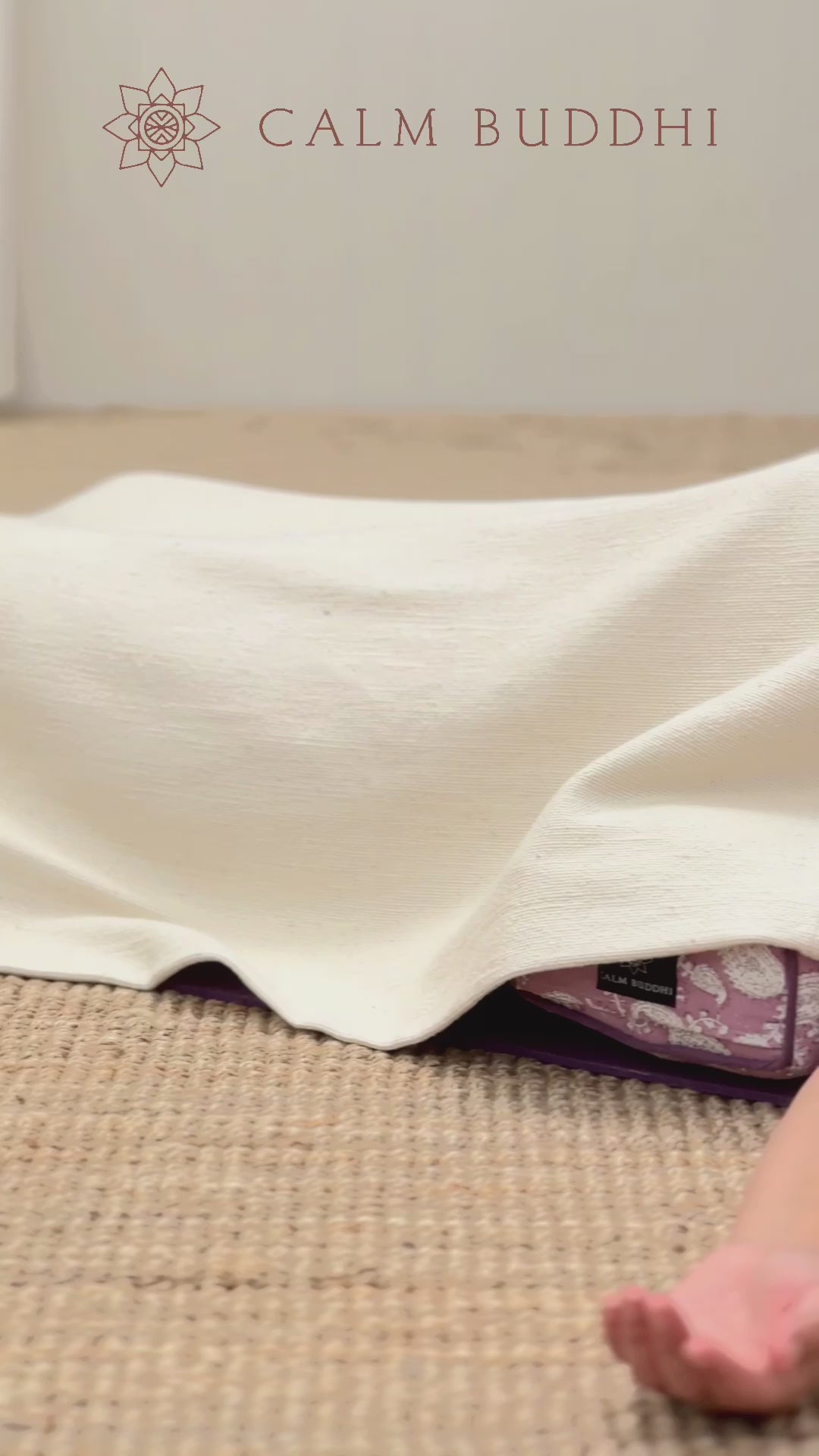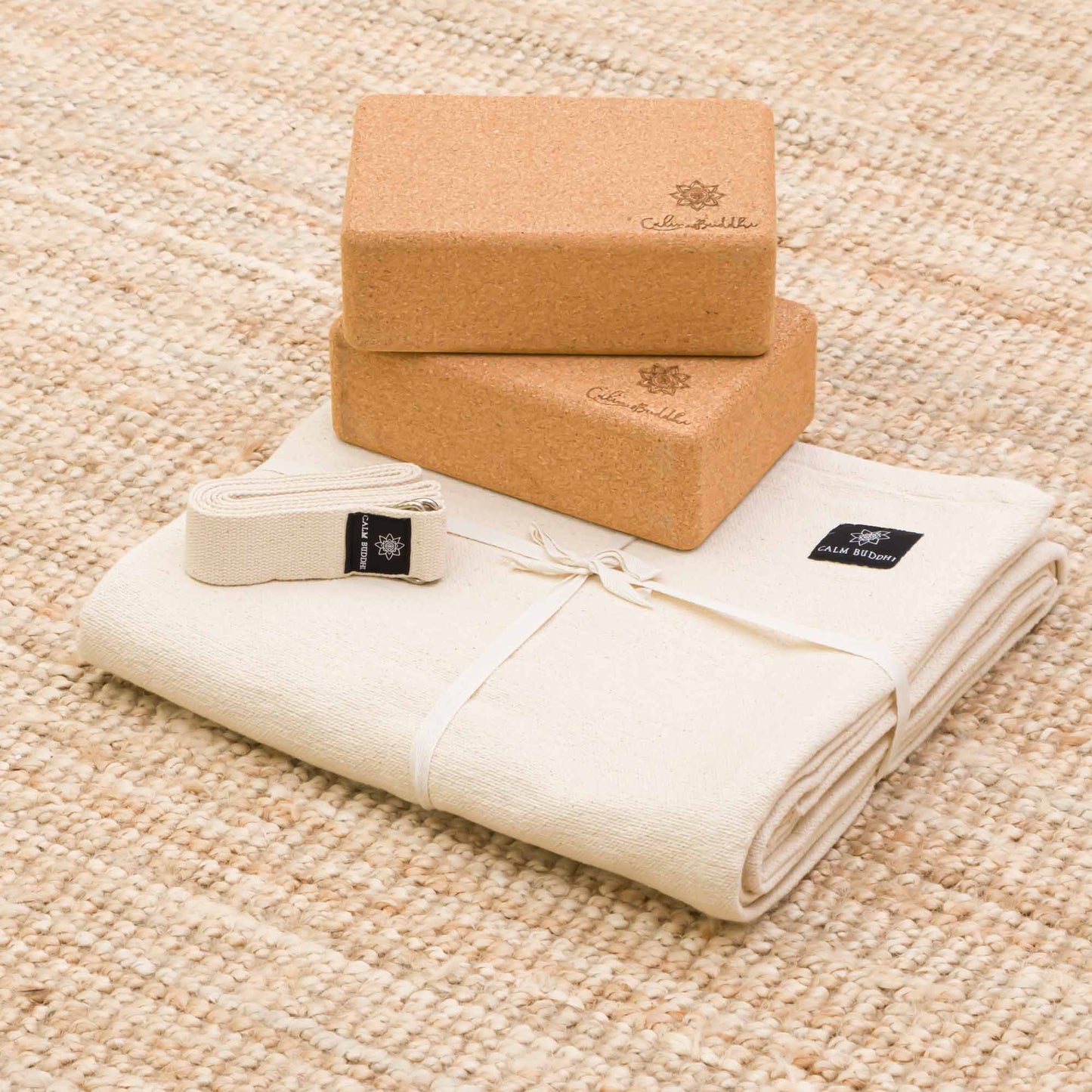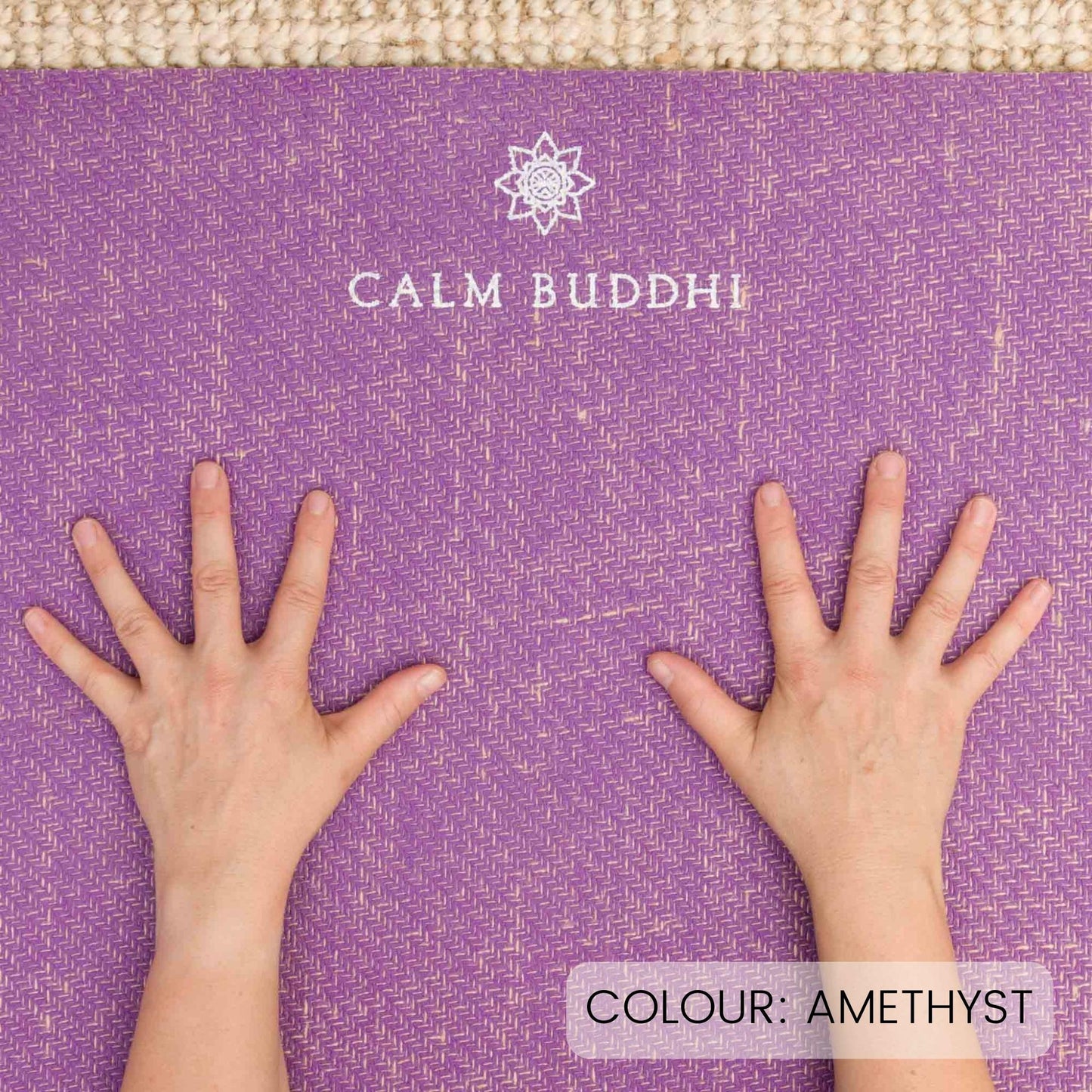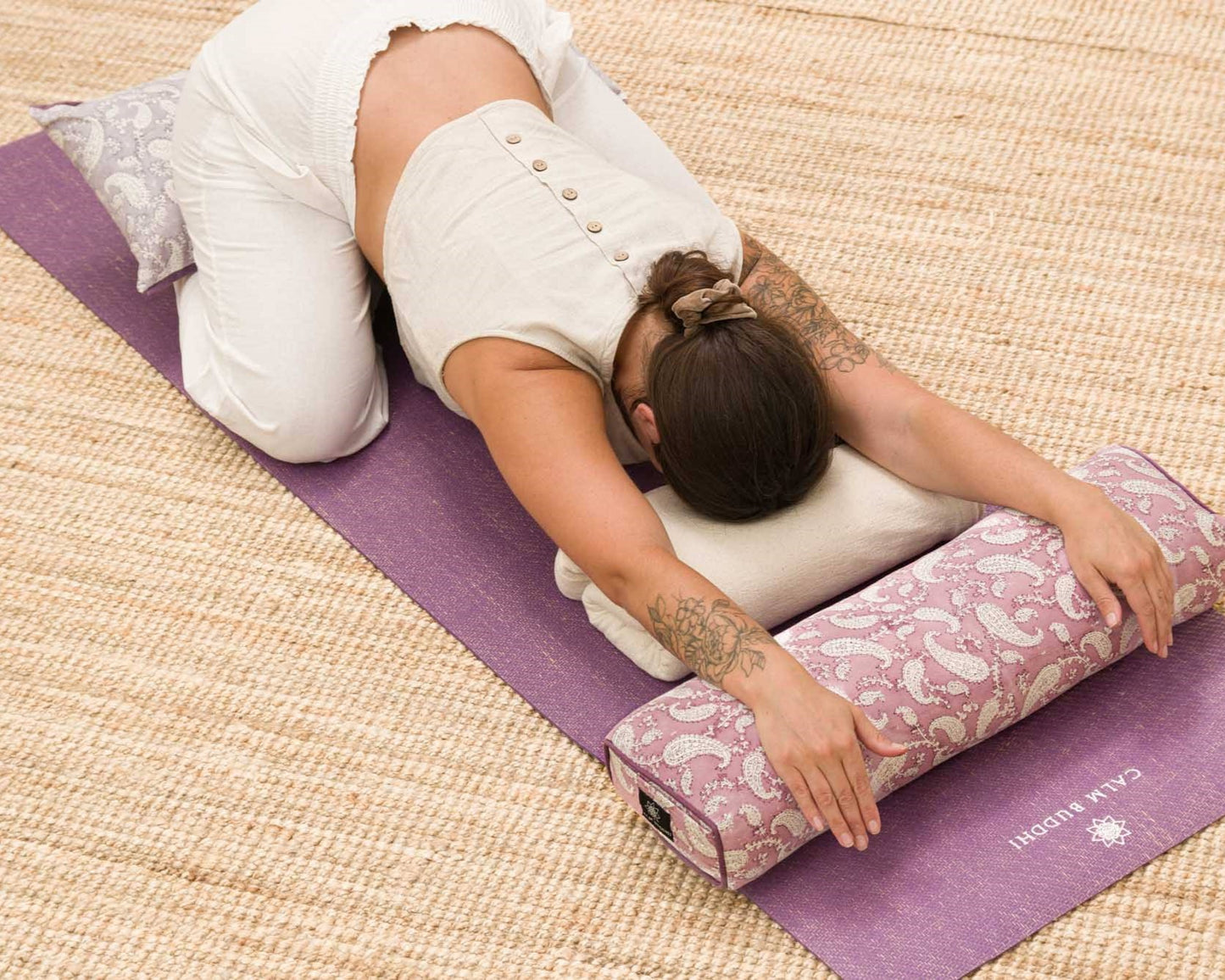
Are you feeling tightness and contraction in the muscles that surround the chest, shoulders, or neck? These are common places to hold tension, so let's delve into the wisdom of heart-opening poses.
Our daily lives often lead us to cradle stress around our hearts. Whether it's the constant use of technology, the demands of daily life, or the hours spent behind the wheel, these activities inadvertently tighten the muscles around the front of our hearts and weaken those behind us.
These energetic imbalances in the muscles can significantly impact how we feel and also change the way we hold ourselves.
Through these Yin postures, we invite the breath to flow freely, allowing the muscles around the heart to expand and letting go of the burdens we unknowingly carry. These poses are:
- Extended Child’s Pose (with Twist variation)
- Reclined Side Bend
- Supported Fish Pose
We’ll support you throughout these practices by providing:
- How these three yoga poses promote well-being for your heart, shoulders, upper back and chest
- How to perform each yoga pose effectively
- The best yoga accessories to use

1. Extended Child’s Pose
Focus: Spine, lower and upper back, shoulders, hips, knees
Level: Suitable for all levels
Total Time: 2 minutes in neutral, 5 to 10 conscious breaths in each twist
The daily use of technology devices encourages an unwanted hunch of the shoulders and back, resulting in a tight chest and weakness in the upper back.
Extended Child’s Pose supports the arms above the head and creates space for the rib cage to melt down whilst gently rolling the shoulders away from the front body, counteracting the dreaded hunch.
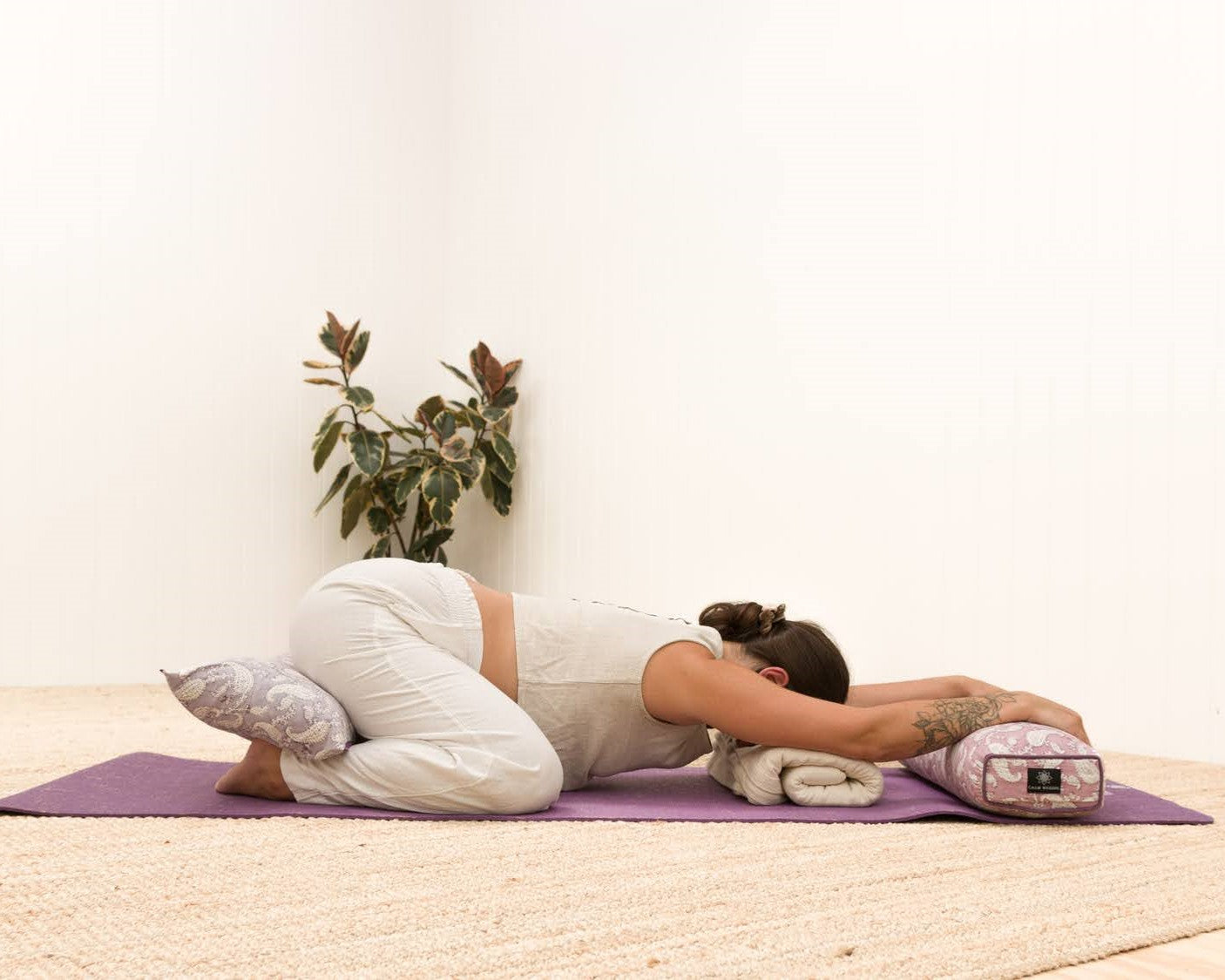
Getting Ready for Extended Child’s Pose
Props required:
1 x Yoga Blanket
1 x Yoga Pillow
Extended Child’s Pose involves resting your hips back towards your heels, supporting your hips with a Yoga Pillow or rolled up Yoga Blanket if your joints need extra space and comfort. Your arms are then stretched out in front of you, with your head supported on a blanket and arms lying over a Pranayama Bolster. The props supporting the arms and head will also create space for the twist variation.
How to Perform Extended Child’s Pose
Start by having the props ready beside you:
- Start on your hands and knees with a few cat/cow stretches to warm up your spine
- On the exhale send your hips back towards your heels. Knees can be apart to create space for your heart to melt towards the mat
- Rest your forehead on the blanket, ensuring your neck is comfortable
- Bring your arms forward towards the top of your mat and rest the forearms and hands over the bolster.
- Allow your belly to expand between your thighs as you inhale. Maintain slow and gentle breaths for 2 minutes
- To add the twist variation, slide you left hand under your right underarm, rolling your shoulder down away from your ear
- Breathe here for 5 to 10 breaths before switching slowly to the other side
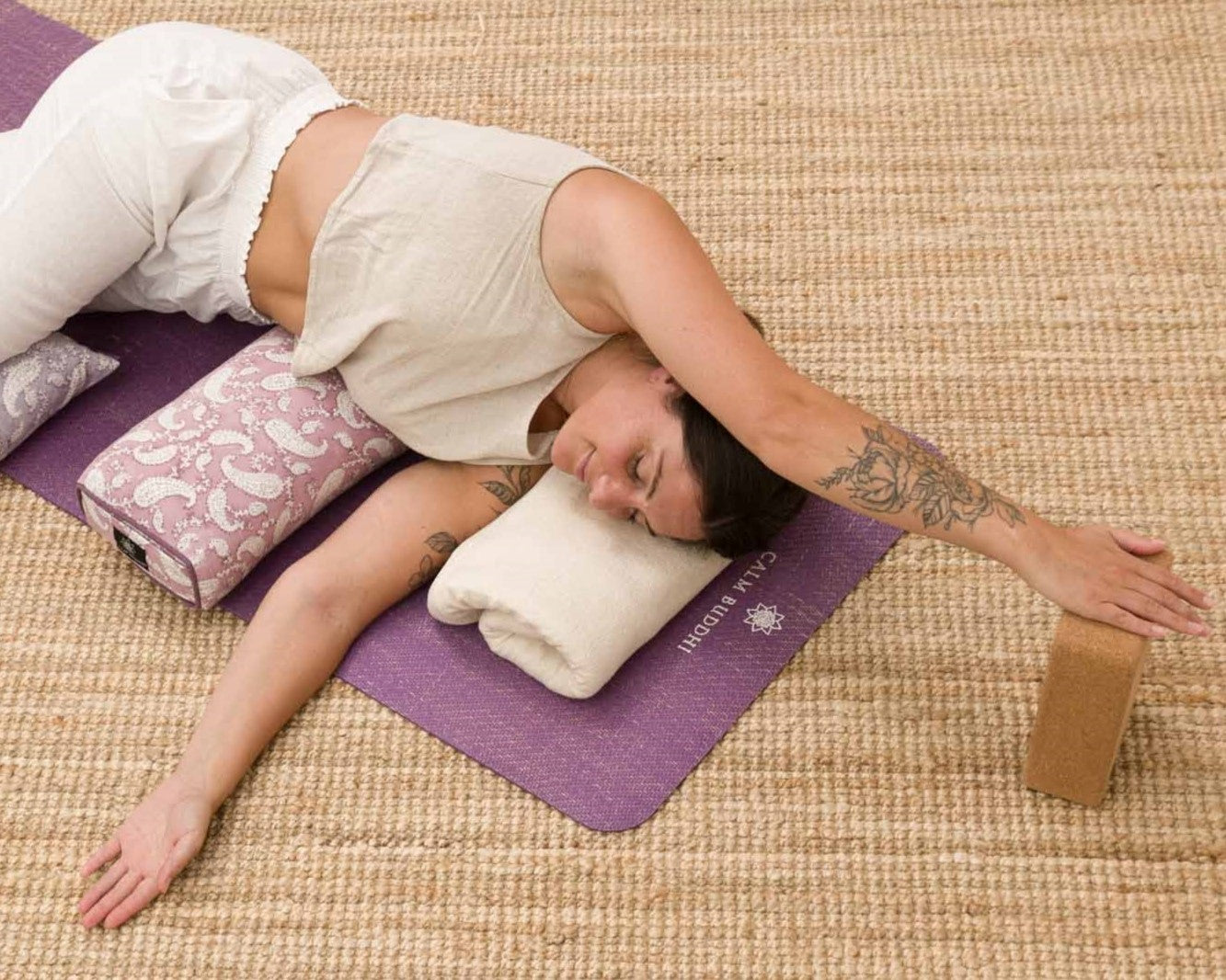
2. Reclined Side Bend
Focus: Intercostal muscles, ribs, thoracic (upper) spine, shoulders
Level: Suitable for all levels
Total Time: 2 minutes each side
Long periods of hunching and favouring one side to complete daily activities can contract and tighten muscles over time. This can also be caused by shallow chest breathing. Side bends can elongate the spine, realigning the body, and allowing the muscles around the lungs to open, encouraging deep, full, cleansing breaths.
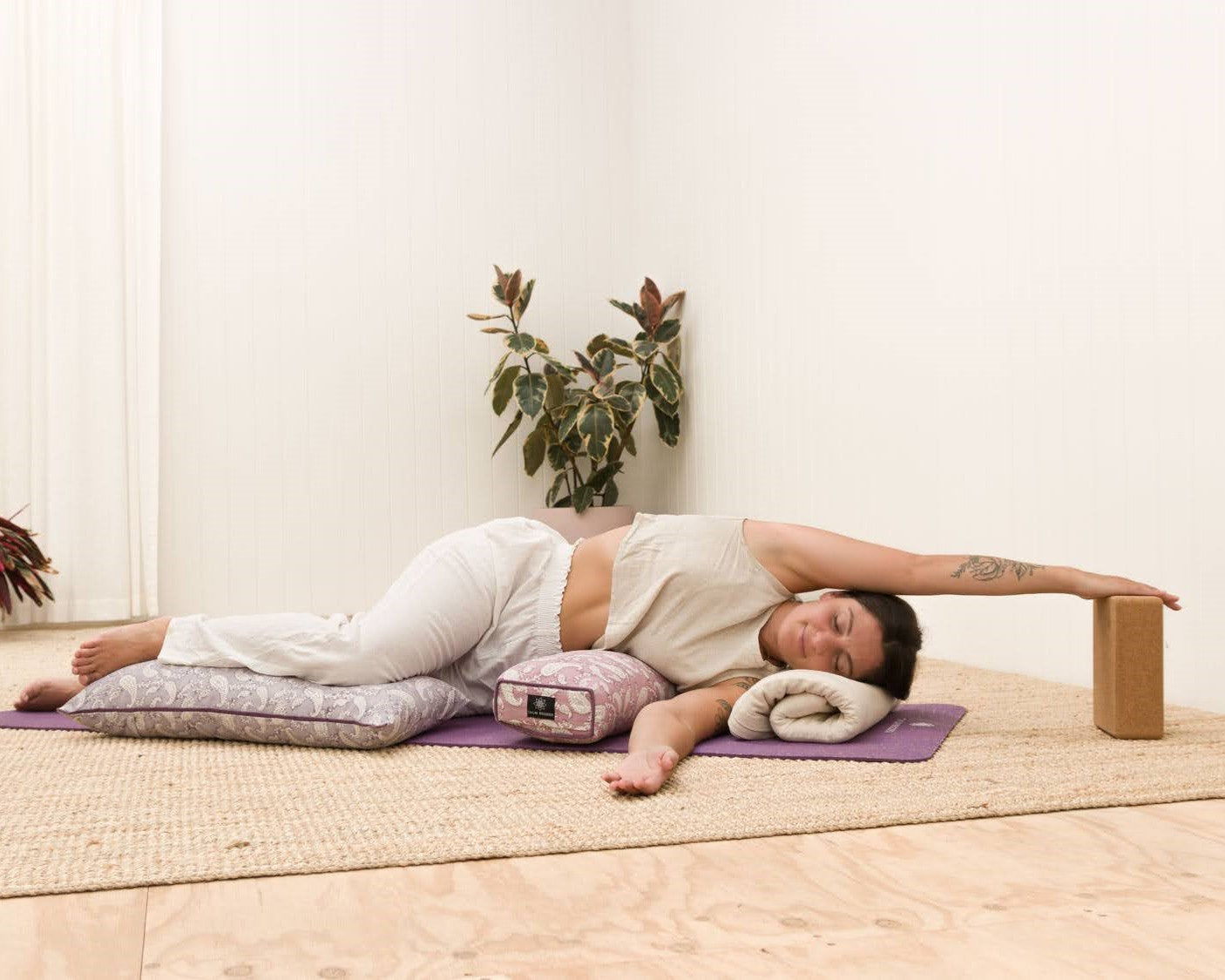
Getting Ready for Reclined Side Bend Pose
Props required:
1 x Yoga Blanket
1 x Yoga Pillow
1 x Yoga Block
We use the Pranayama Bolster as it’s compact yet sturdy to assist in isolating the stretch where the prop is positioned - in this case, the side ribs.
How to Perform Reclined Side Bend Pose
Start by having the props ready beside you:
- Lay the left side of your body on the mat with your ribs over the bolster and head supported on the blanket
- Start with bent knees and you may even like your top leg supported on a yoga bolster
- Slide your left arm out away from you, palm facing up
- Extend your top arm over your head and reach gently for a block. Explore the range of your shoulder by moving your hand (taking the block) in various positions over your head
- Once you have found your sweet spot - not too intense - breathe here for 2 minutes
- Slowly switch to the right side and repeat the steps above. Remember each side may feel different, listen to your needs and adjust accordingly
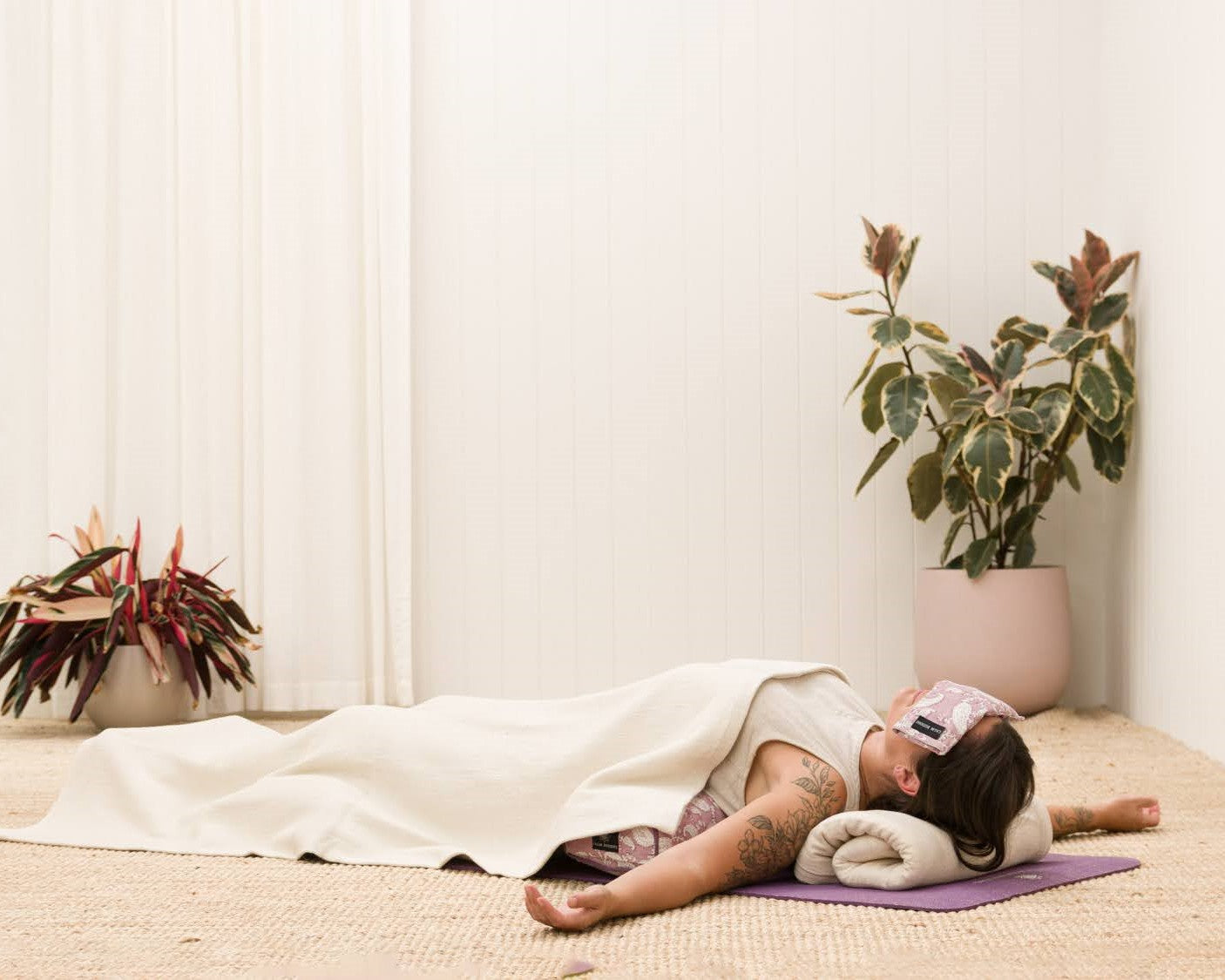
3. Supported Fish pose
Focus: Chest, shoulders, respiratory function, heart chakra activation
Level: Suitable for all levels
Total Time: 2 minutes
We practice Supported Fish Pose in yoga to open the chest, counteract the effects of modern sedentary lifestyles, promote respiratory health, induce relaxation, and open the space around the heart for emotional well-being.
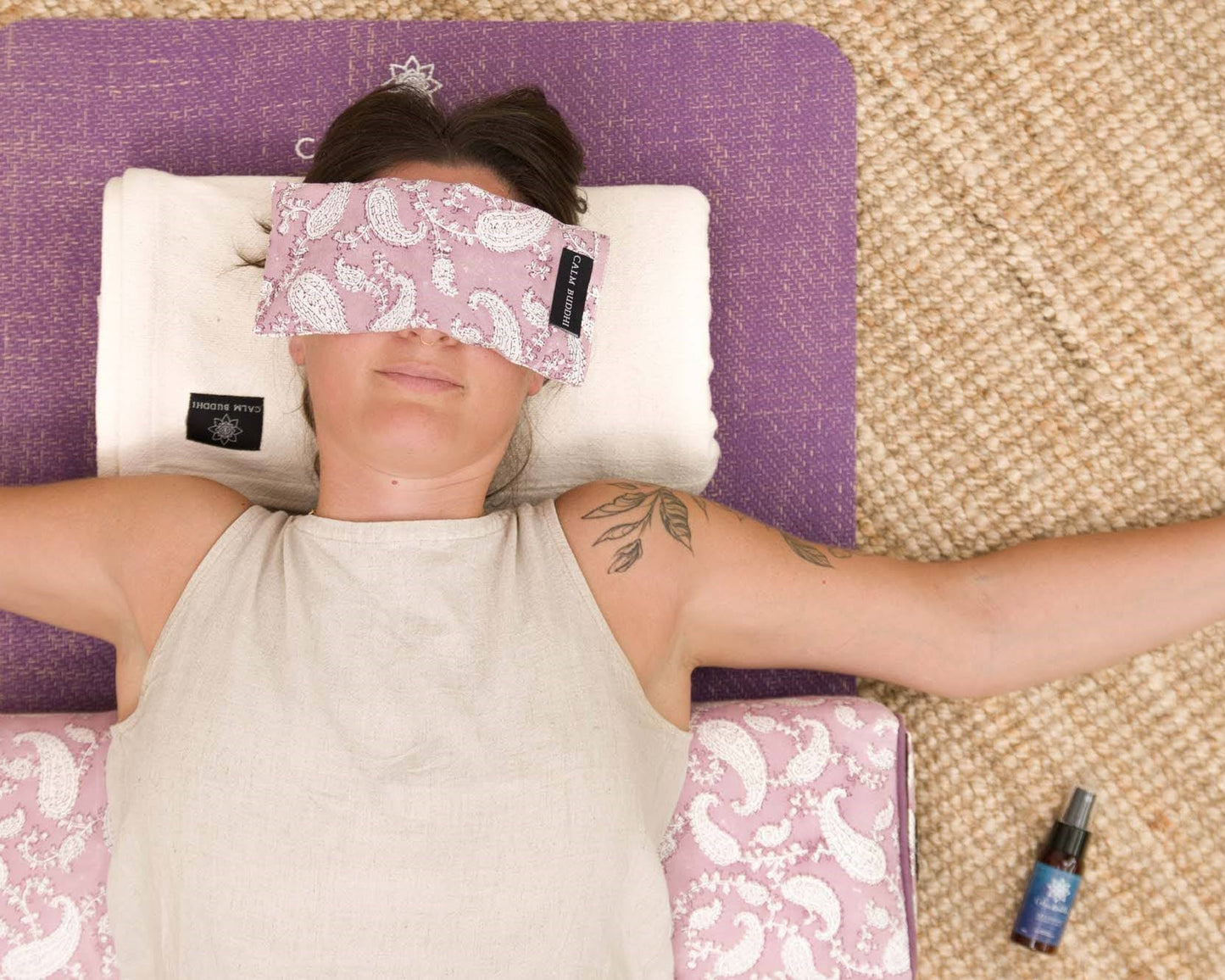
Getting Ready for Supported Fish pose
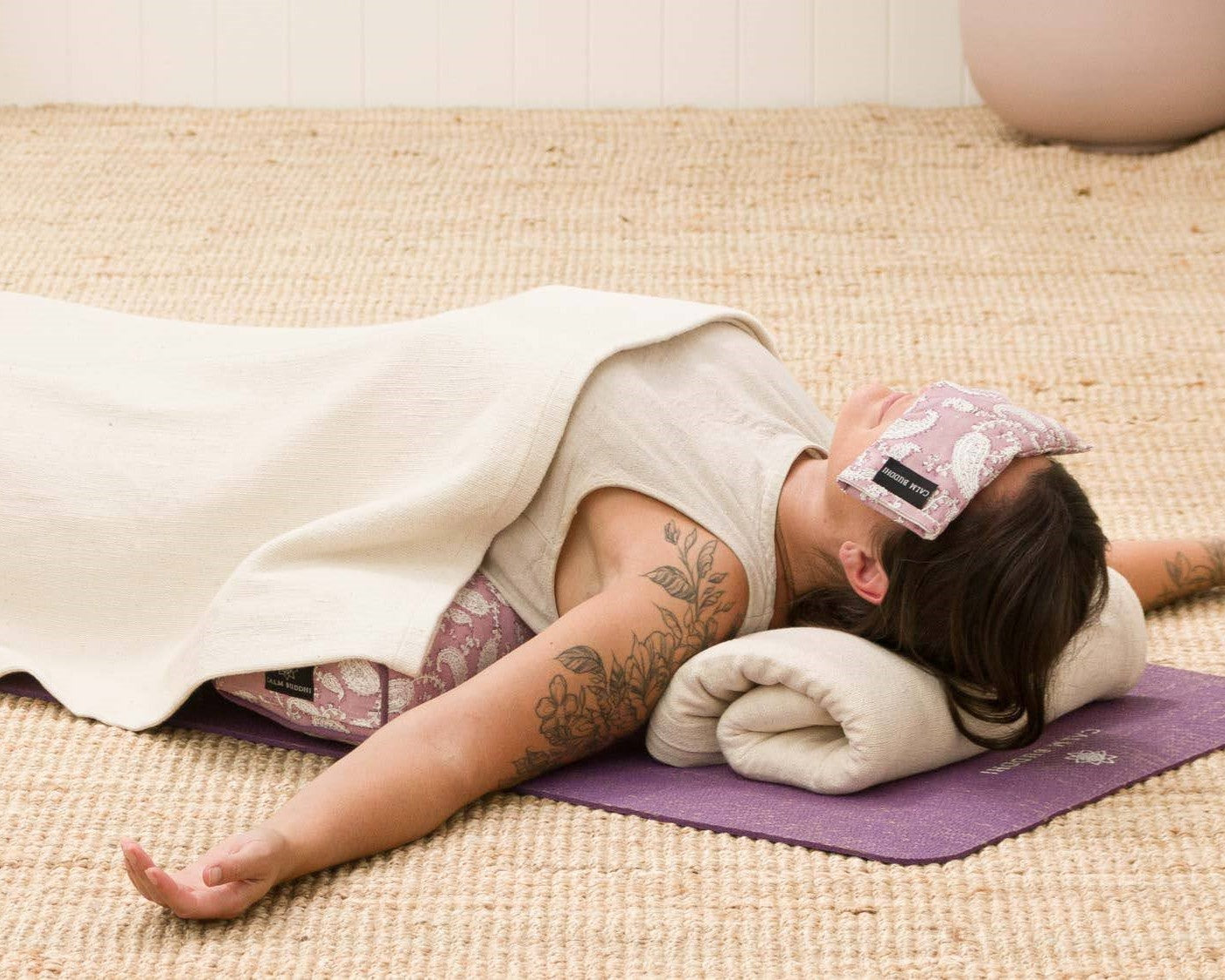
How to Perform Supported Fish pose
Start by having the props ready beside you:
- Begin with the props stationed in the same position as Reclined Side Bend Pose
- Laying on your back, with the middle of your back over the Pranayama Bolster and your head resting on the blanket
- Once your back and chest are in a position that feels comfortable and allows ease in every breath, reach your arms out to the side, relax them on the earth
- Your legs may be straight, however a gentle bend in the knees can reduce tension in the lower back. A yoga pillow under your knees may be useful
- Enjoy this blissful heart opener for 2 minutes. Shorten or lengthen the time for as long as it suits your body and needs at the time of practice
Note: If you are experiencing issues playing the video click here to watch on YouTube
